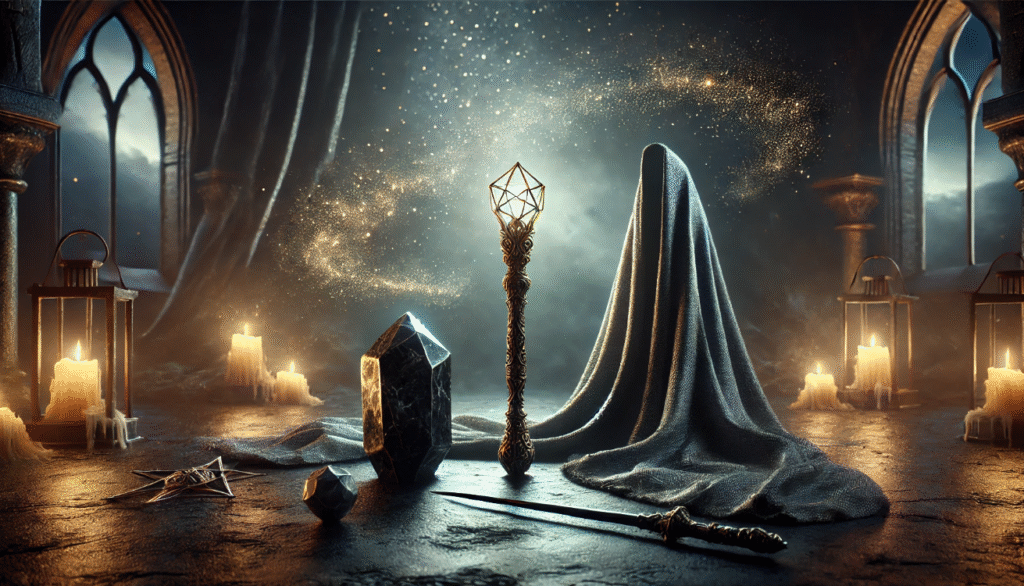
The Mystery of the Deathly Hallows Explained: Origins, Meaning, and How It Shapes the Wizarding World
What if three magical objects could make you the Master of Death? That’s the haunting promise at the heart of the mystery of the Deathly Hallows — a tale that has puzzled fans, sparked endless theories, and left even the most devoted Harry Potter readers wondering what it all really means.
But beyond wands and wizardry lies something deeper: a powerful story about ambition, loss, and the choices that define us. Whether you’re new to the wizarding world or a lifelong fan, uncovering the truth behind the Hallows can help you see the series—and even life itself—in a whole new light.
In this guide, we’ll break it all down: the origins of the Deathly Hallows, what they symbolize, and how understanding them can give us practical insights into courage, grief, and wisdom. Ready to unlock the magic? Let’s begin.
Table of Contents
ToggleWhy the Deathly Hallows Still Fascinate Us
The Deathly Hallows continues to capture the imagination of fans around the world—even years after the final Harry Potter book and movie. But why do they still resonate so deeply? Let’s break it down in a way that’s practical, relatable, and surprisingly relevant to everyday life.
They Represent Core Human Desires
Each of the Hallows taps into a deep, universal longing:
- The Elder Wand: The Elder Wand symbolizes power and control—something many of us wish we had when life feels uncertain.
- The Resurrection Stone: The Resurrection Stone speaks to grief and the hope of reunion, which everyone who has lost someone can understand.
- The Invisibility Cloak: The Invisibility Cloak offers freedom and safety, allowing us to hide from danger or simply take a break from the world.
These are timeless themes that go beyond magic—they reflect the real emotional needs we all experience.
What Are the Deathly Hallows?
The Deathly Hallows are three legendary magical objects in the Harry Potter universe. Each one grants its owner a powerful advantage—but together, they represent something even more significant: mastery over death itself.
Let’s break down what they are, what they do, and why they matter.
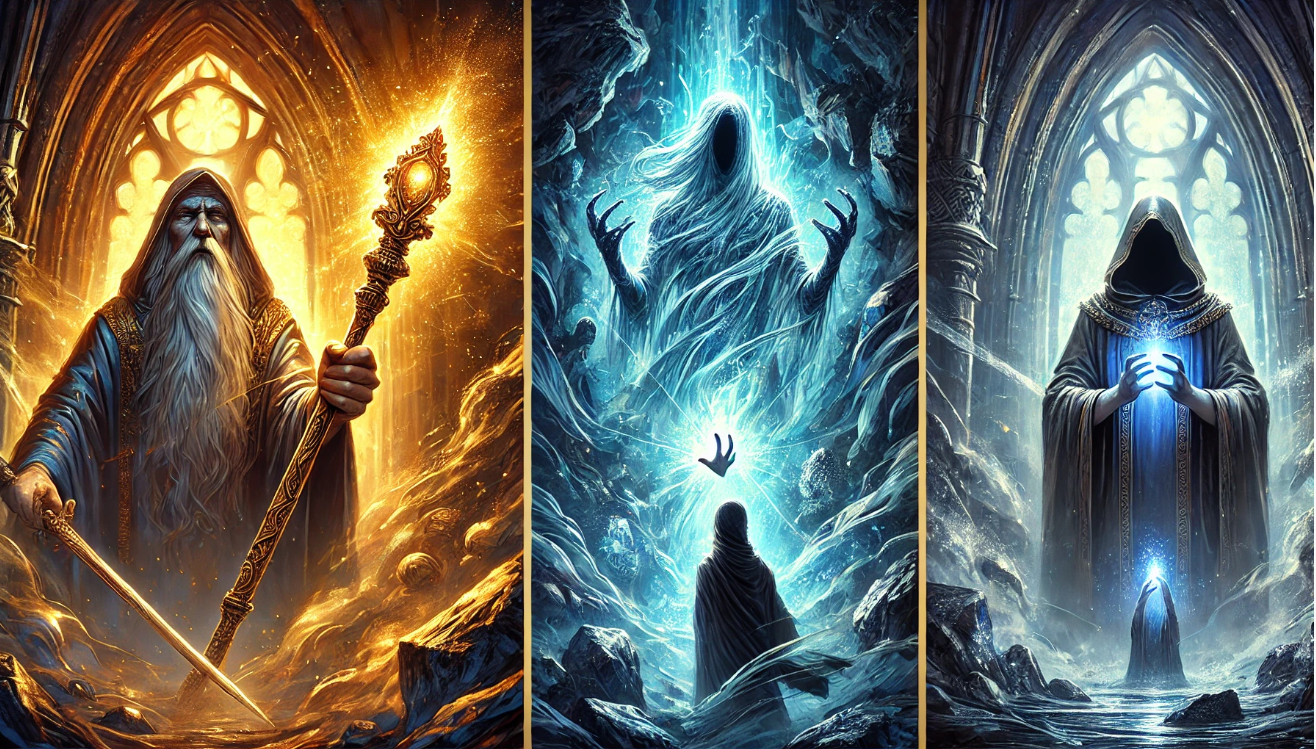
1. The Elder Wand: The Wand of Power
What it is: The most powerful wand ever created.
Why it matters: It can overpower any other wand, making its wielder nearly unbeatable in duels.
But there’s a catch: It only answers to someone who has won it from its previous owner—usually through combat. This leads to betrayal, violence, and obsession.
The real takeaway: The pursuit of ultimate power often brings danger, not peace.
2. The Resurrection Stone – The Illusion of Reunion
What it is: A stone that can summon the echo of a loved one from the dead.
Why it matters: It appeals to those grieving a loss, offering a chance to speak to the departed again.
The truth: Those brought back are not truly alive. Holding on too tightly to the past can prevent healing.
Real takeaway: Some things are meant to be let go—even when it hurts.
3. The Invisibility Cloak – True Protection
What it is: A cloak that renders the wearer completely invisible.
Why it matters: Unlike other invisibility cloaks, this one doesn’t wear out. It offers true, lasting concealment from danger—even from Death.
Why it’s special: It represents wisdom, discretion, and survival—not power or control.
Real takeaway: Sometimes, stepping back or staying hidden is the smartest move.
The Symbol of the Deathly Hallows
The triangle symbol is everywhere—from fan tattoos to book covers:
Triangle = Invisibility Cloak
Circle = Resurrection Stone
Line = Elder Wand
Together, they form one of the most iconic symbols in modern fantasy.
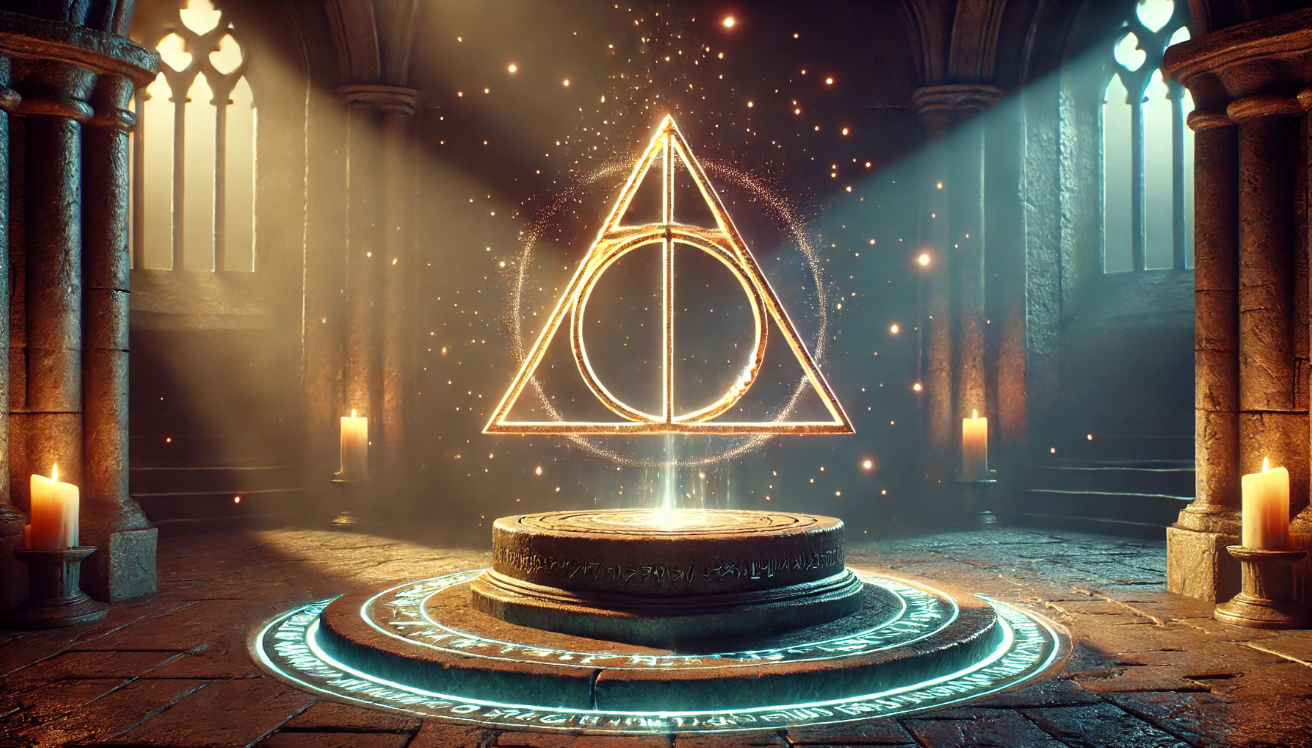
What Makes Them So Important?
The Deathly Hallows aren’t just magical items—they’re a moral test.
They force each character (and reader) to confront what they truly value: Power? Love? Safety?
Harry’s journey shows that choosing wisely—not greedily—is what makes someone truly great.
Whether you’re new to the Wizarding World or revisiting it, understanding the Hallows adds a deeper layer to the story—and offers insights that go far beyond magic.
The Deathly Hallows are crucial not just as powerful magical objects, but as deep symbols woven into the heart of Harry Potter and the Deathly Hallows. Each Hallow—the Elder Wand, the Resurrection Stone, and the Invisibility Cloak—represents a different human response to death: the desire for power, the longing to reverse loss, and the wisdom to accept mortality.
- The Elder Wand: Sought by many, including Voldemort, it represents dominance over others. But its violent history shows that power without humility leads to destruction.
- The Resurrection Stone: Used to bring back lost loved ones, it embodies grief and the inability to move on. When Harry uses it before facing Voldemort, it gives comfort—not resurrection—showing his maturity in accepting death.
- The Invisibility Cloak: Passed down through Harry’s family, it allows the bearer to evade death peacefully. This Hallow ultimately proves the most noble and enduring.
Together, the Hallows create a philosophical spine for the final book. They challenge readers (and characters) to consider how they confront loss, fear, and the unknown. In rejecting the temptation of the Hallows and choosing self-sacrifice, Harry becomes “master of death” not through control, but through understanding—making the Hallows a powerful metaphor for life itself.
The Legend Behind the Hallows: A Story Within a Story
At the heart of The Deathly Hallows lies a haunting fairy tale—“The Tale of the Three Brothers.” It’s more than a bedtime story; it’s a key that unlocks one of the biggest mysteries in the Harry Potter universe.
Let’s unpack what makes this tale so powerful—and how it blurs the line between myth and magical history.
The Story: Three Brothers and a Deal with Death
The legend, found in The Tales of Beedle the Bard, tells of three wizarding brothers who try to cheat Death. Impressed—but not fooled—Death offers them each a “gift”:
- The Elder Wand – for the eldest, who craves unbeatable power.
- The Resurrection Stone – for the middle, mourning a lost love.
- The Invisibility Cloak – for the youngest, who wisely seeks to avoid Death altogether.
In the end, the first two brothers meet tragic ends, while the third lives a long life and greets Death as an old friend.
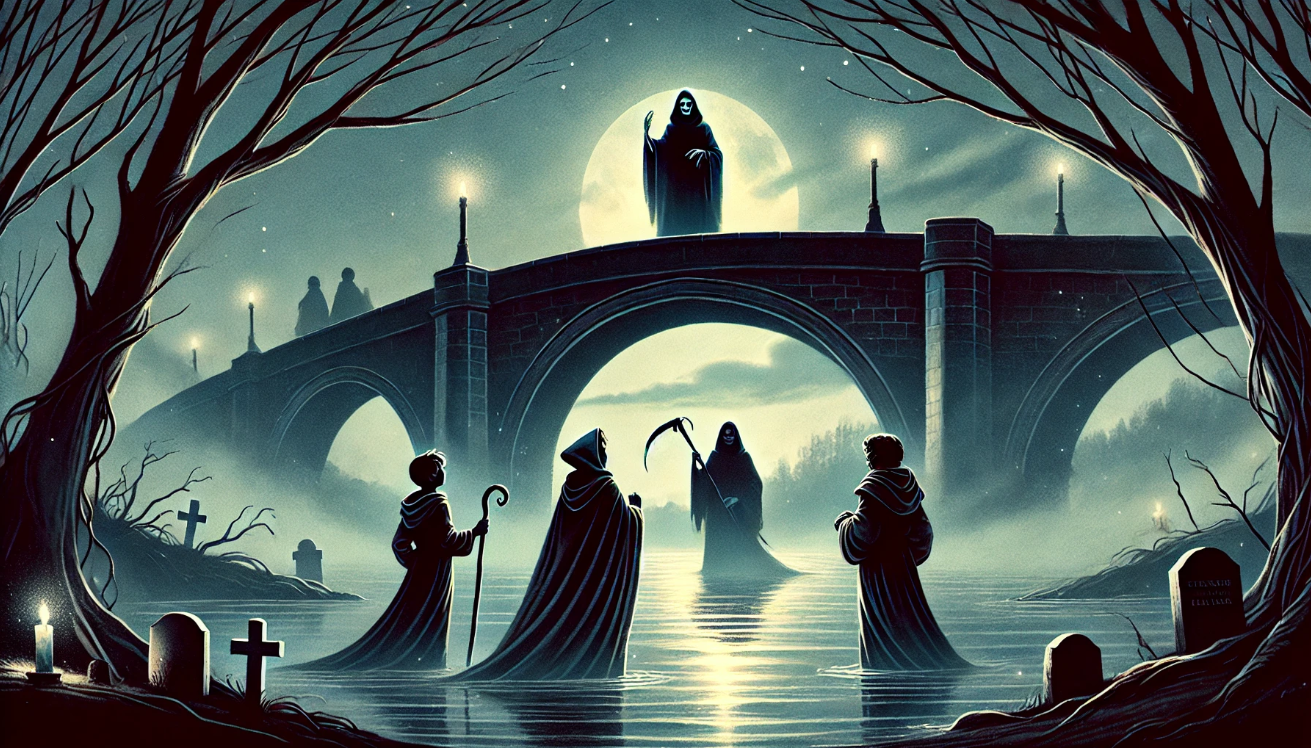
The Peverell Connection
The Deathly Hallows—three legendary magical objects—are deeply rooted in wizarding lore and tied directly to the Peverell brothers. According to The Tales of Beedle the Bard, the Hallows were gifts from Death himself to three brothers who cheated death: Antioch, Cadmus, and Ignotus Peverell.
Each brother received a powerful artifact:
- The Elder Wand for power-hungry Antioch,
- The Resurrection Stone for grief-stricken Cadmus,
- The Invisibility Cloak for humble Ignotus.
While some believed the Hallows were mere myth, Dumbledore and others uncovered that the Peverell brothers were real, and their magical legacy endured. Harry himself is a direct descendant of Ignotus Peverell, inheriting the Invisibility Cloak through his family line.
This lineage subtly frames Harry’s worthiness as the “Master of Death”—not for seeking power or resurrection, but for his ability to let go. The Peverell connection adds layers of destiny and myth to the story, tying ancient wizarding history to Harry’s personal journey. It elevates the Hallows from magical curiosities to moral symbols, each representing different attitudes toward death—and ultimately, choices that define character.
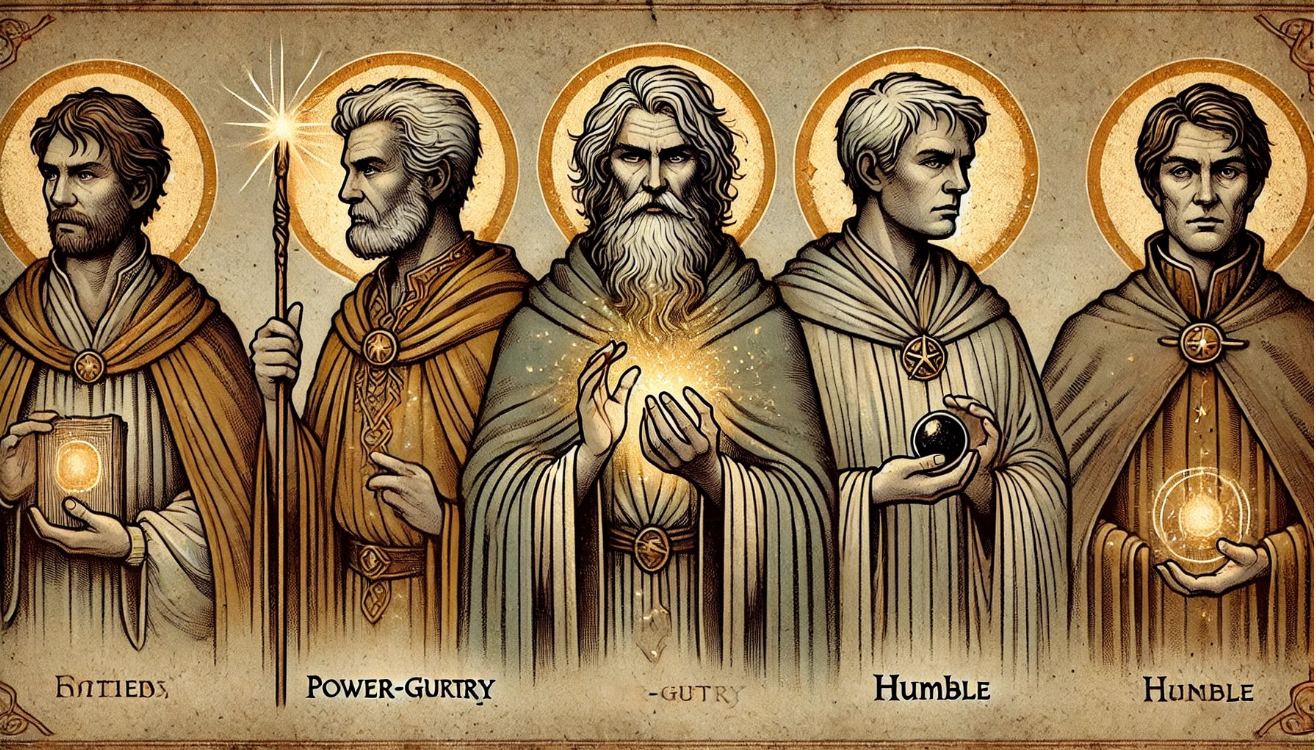
What’s the Deeper Meaning?
The tale works on multiple levels:
- It warns against the reckless pursuit of power and resurrection.
- It celebrates humility and wisdom as the path to peace.
- It teaches that death is not an enemy, but a part of life to be respected.
For readers, it’s a mirror—helping us reflect on how we face fear, loss, and temptation in our own lives.
Why This Story Still Matters
This “story within a story” is one of J.K. Rowling’s most brilliant storytelling tools. It: Adds mythic depth to the world of Harry Potter. Blends morality, mystery, and magic in a way that resonates across all ages.
Sets the stage for Harry’s final choice—not to chase power, but to accept death on his own terms.
The legend of the Deathly Hallows isn’t just background lore. It’s the emotional and philosophical core of the series—and a reminder that stories often hide deeper truths.
The Hallows in Pop Culture and Fan Theories
The Deathly Hallows aren’t just a magical concept—they’ve become a global pop culture symbol, inspiring tattoos, memes, theories, and even life philosophies. But why have they stuck with fans for so long? And what deeper meanings do people read into them?
Let’s dive into how the Hallows live on beyond the page—and the fan theories that keep the magic alive.
The Symbol That Took Over the World
The triangle-circle-line symbol of the Deathly Hallows is now iconic. You’ll find it:
- On merchandise (shirts, mugs, jewelry)
- As tattoos by fans honoring the series or loved ones lost
- In fan art and digital wallpapers
- As a secret signal between Potterheads worldwide
Why it resonates: It’s simple, mysterious, and loaded with meaning—representing power, loss, and wisdom all at once.
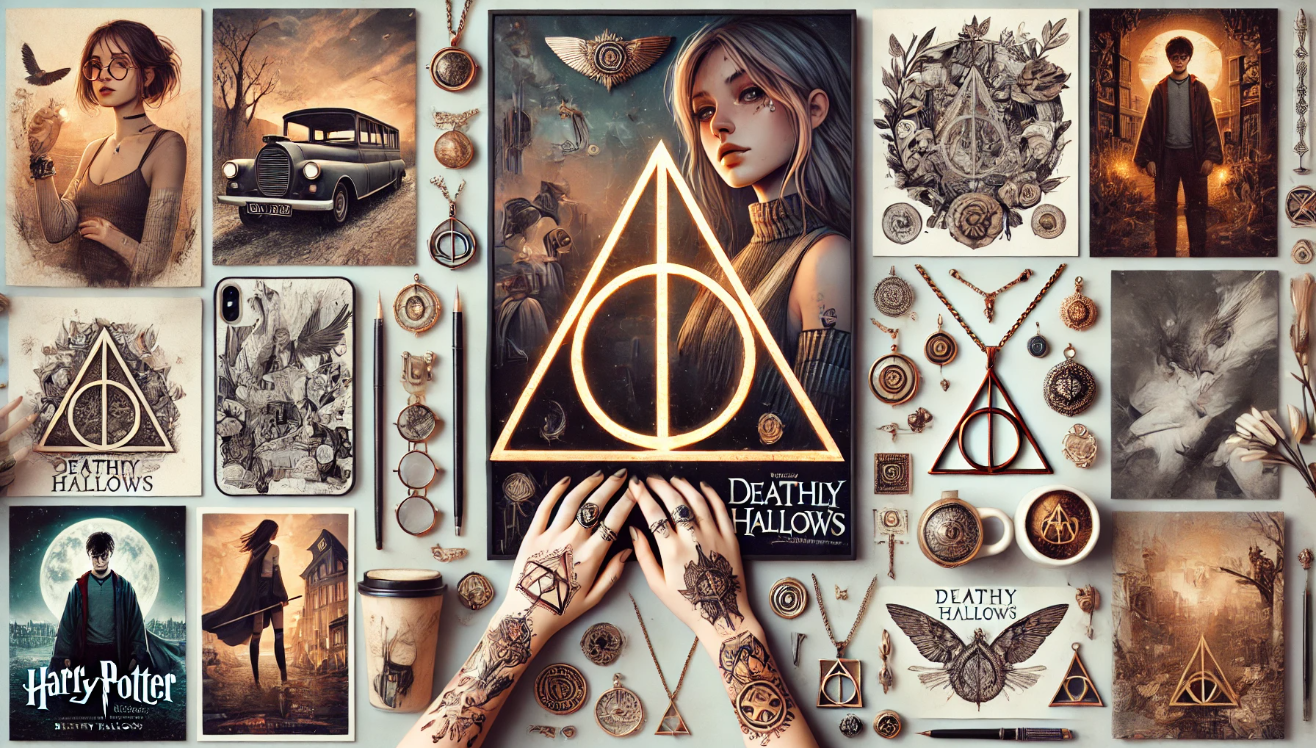
The Most Popular Fan Theories About the Hallows
Over the years, fans have developed theories that add depth to the story. Here are the ones worth knowing:
1. Dumbledore: Death
One of the most loved theories says Dumbledore is “Death” in the Tale of the Three Brothers:
- He gives Harry the Invisibility Cloak (like Death in the story).
- He greets Harry at King’s Cross after Harry “dies.”
- He once owned all three Hallows.
This theory paints Dumbledore as the wise guide who helps Harry face death with courage.
2. The Three Brothers Are Voldemort, Snape, and Harry
Another fan-favorite theory aligns each character with one of the brothers:
- Voldemort = Eldest brother (seeks power, dies violently)
- Snape = Middle brother (haunted by lost love)
- Harry = Youngest brother (accepts death, survives)
This gives emotional weight to each character’s arc and makes the fairy tale feel personal.
3. The Hallows = Stages of Life
Some see the Hallows as a metaphor:
- Elder Wand = Youthful ambition
- Resurrection Stone = Grief and longing
- Invisibility Cloak = Maturity and wisdom
This reading makes the Hallows feel timeless—relevant not just in fiction, but in how we approach our own lives.
The Hallows in Today’s Media & Trends
Even years after the final book, the Hallows continue to appear in:
- TikTok edits and cosplay transformations
- Reddit threads dissecting their lore
- YouTube essays on the meaning of death in Harry Potter
- Wizarding World games, merch, and experiences
The Hallows remain a symbol of thoughtful fandom—a deeper layer for fans who want more than spells and broomsticks.
The Deathly Hallows endure in pop culture because they speak to something bigger than magic—they touch on how we face loss, power, and mortality. And fan theories? They’re a reminder that great stories never really end—they just keep evolving.

The story of the Deathly Hallows offers more than a thrilling magical legend—it delivers profound philosophical insight. By contrasting power, grief, and humility through the three Hallows, J.K. Rowling challenges readers to examine their own values. In choosing the Invisibility Cloak over domination or denial, Harry embodies the ultimate lesson: true strength lies in acceptance, not resistance. The Hallows remain a timeless reminder that life’s greatest power is not to evade death, but to live with courage, love, and wisdom. Through them, the Harry Potter series leaves readers with enduring truths far beyond the realm of magic.
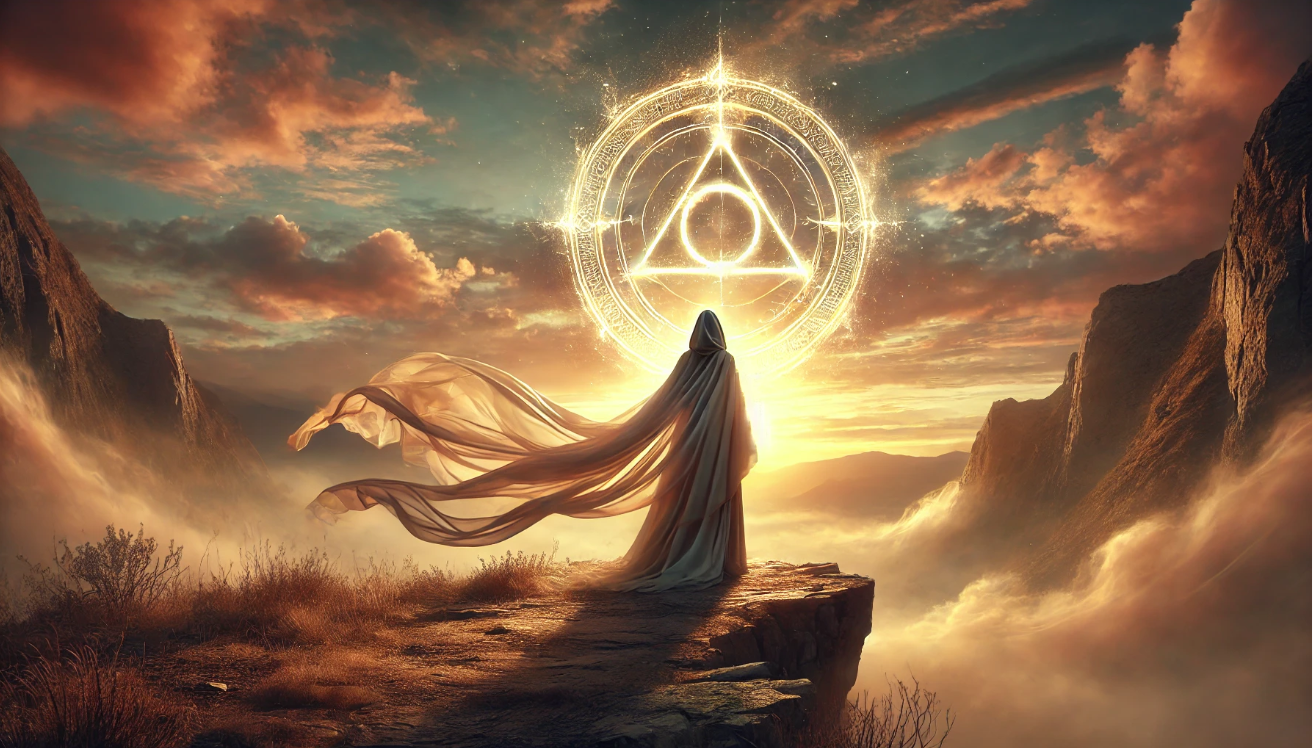
Frequently Asked Questions (FAQs)
1. What are the Deathly Hallows in Harry Potter?
The Deathly Hallows are three magical objects that are believed to make their possessor the Master of Death. They consist of the Elder Wand, the Resurrection Stone, and the Invisibility Cloak. These items have significant power and are central to the final book in the Harry Potter series.
2. What is the origin of the Deathly Hallows?
The Deathly Hallows were introduced in “The Tale of the Three Brothers,” a story from “The Tales of Beedle the Bard.” According to the tale, Death gives each brother a powerful gift: the Elder Wand, the Resurrection Stone, and the Invisibility Cloak. These gifts were meant to grant mastery over death, but they also came with tragic consequences.
3. What do the Deathly Hallows symbolize?
The Deathly Hallows symbolize the complex relationship between life, death, and the desire for immortality. Each Hallow represents a different aspect of how people try to overcome or accept death. The story reflects the idea that death is inevitable, and attempting to defy it can lead to negative outcomes.
4. How do the Deathly Hallows affect the Wizarding World?
The Deathly Hallows shape the Wizarding World by influencing the lives of characters like Harry Potter, Voldemort, and Dumbledore. The Elder Wand, Resurrection Stone, and Invisibility Cloak are all central to the plot of the final book, and their presence plays a key role in the defeat of Voldemort and the resolution of the series.
5. What is the connection between Harry Potter and the Deathly Hallows?
Harry Potter unknowingly becomes the master of all three Hallows by the end of the series. He inherits the Invisibility Cloak from his father, discovers the Resurrection Stone, and ultimately becomes the true owner of the Elder Wand after its previous masters are defeated. This connection helps him conquer Voldemort and solidify his place as a hero.
6. Why is the Elder Wand so powerful?
The Elder Wand is considered the most powerful wand in existence due to its unique properties. It is unbeatable in duels and grants its wielder unmatched magical strength. However, its power comes with a price, as it is constantly sought after and causes violence among its users, making it a dangerous object to possess.
7. What is the Resurrection Stone, and how does it work?
The Resurrection Stone allows the user to summon the spirits of the dead. However, it does not truly bring people back to life. The stone can only create shadows or echoes of the deceased, and it ultimately reminds users that death cannot be undone.
8. What happens to the Deathly Hallows at the end of the series?
At the end of the Harry Potter series, the Deathly Hallows are separated once more. Harry keeps the Invisibility Cloak, which was passed down through his family. He returns the Resurrection Stone to the Forest of Dean and ensures that the Elder Wand is laid to rest, ending its violent legacy. This reflects the theme of accepting death rather than seeking to control it.
